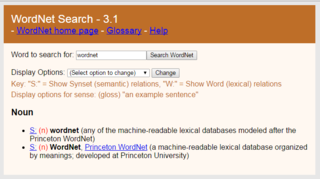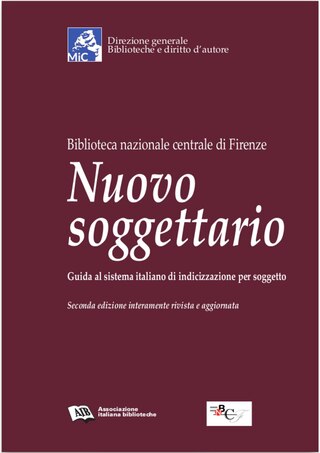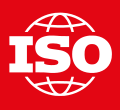
The Dublin Core, also known as the Dublin Core Metadata Element Set (DCMES), is a set of fifteen main metadata items for describing digital or physical resources. The Dublin Core Metadata Initiative (DCMI) is responsible for formulating the Dublin Core; DCMI is a project of the Association for Information Science and Technology (ASIS&T), a non-profit organization.
A thesaurus, sometimes called a synonym dictionary or dictionary of synonyms, is a reference work which arranges words by their meanings, sometimes as a hierarchy of broader and narrower terms, sometimes simply as lists of synonyms and antonyms. They are often used by writers to help find the best word to express an idea:
...to find the word, or words, by which [an] idea may be most fitly and aptly expressed

WordNet is a lexical database of semantic relations between words that links words into semantic relations including synonyms, hyponyms, and meronyms. The synonyms are grouped into synsets with short definitions and usage examples. It can thus be seen as a combination and extension of a dictionary and thesaurus. While it is accessible to human users via a web browser, its primary use is in automatic text analysis and artificial intelligence applications. It was first created in the English language and the English WordNet database and software tools have been released under a BSD style license and are freely available for download from that WordNet website. There are now WordNets in more than 200 languages.
Controlled vocabularies provide a way to organize knowledge for subsequent retrieval. They are used in subject indexing schemes, subject headings, thesauri, taxonomies and other knowledge organization systems. Controlled vocabulary schemes mandate the use of predefined, preferred terms that have been preselected by the designers of the schemes, in contrast to natural language vocabularies, which have no such restriction.

Learning Object Metadata is a data model, usually encoded in XML, used to describe a learning object and similar digital resources used to support learning. The purpose of learning object metadata is to support the reusability of learning objects, to aid discoverability, and to facilitate their interoperability, usually in the context of online learning management systems (LMS).
The Getty Thesaurus of Geographic Names is a product of the J. Paul Getty Trust included in the Getty Vocabulary Program. The TGN includes names and associated information about places. Places in TGN include administrative political entities and physical features. Current and historical places are included. Other information related to history, population, culture, art and architecture is included.
Simple Knowledge Organization System (SKOS) is a W3C recommendation designed for representation of thesauri, classification schemes, taxonomies, subject-heading systems, or any other type of structured controlled vocabulary. SKOS is part of the Semantic Web family of standards built upon RDF and RDFS, and its main objective is to enable easy publication and use of such vocabularies as linked data.
IMS VDEX, which stands for IMS Vocabulary Definition Exchange, in data management, is a mark-up language – or grammar – for controlled vocabularies developed by IMS Global as an open specification, with the Final Specification being approved in February 2004.
ISO 2788 was the ISO international standard for monolingual thesauri for information retrieval, first published in 1974 and revised in 1986. The official title of the standard was "Guidelines for the establishment and development of monolingual thesauri".
AGROVOC is a multilingual controlled vocabulary covering all areas of interest of the Food and Agriculture Organization of the United Nations (FAO), including food, nutrition, agriculture, fisheries, forestry and the environment. By November 2021, the vocabulary consisted of over 39,600 concepts with up to 924,000 terms in up to 41 different languages. It is a collaborative effort, edited by a community of experts and coordinated by FAO. AGROVOC is made available by FAO as an RDF/SKOS-XL concept scheme and published as a linked data set aligned to 20 other vocabularies.
The AgMES initiative was developed by the Food and Agriculture Organization (FAO) of the United Nations and aims to encompass issues of semantic standards in the domain of agriculture with respect to description, resource discovery, interoperability, and data exchange for different types of information resources.
Agricultural Information Management Standards (AIMS) is a web site managed by the Food and Agriculture Organization of the United Nations (FAO) for accessing and discussing agricultural information management standards, tools and methodologies connecting information workers worldwide to build a global community of practice. Information management standards, tools and good practices can be found on AIMS:
ISO/TC 46 is Technical Committee 46 of the International Organization for Standardization (ISO), responsible for Information and documentation.
The Art & Architecture Thesaurus (AAT) is a controlled vocabulary used for describing items of art, architecture, and material culture. The AAT contains generic terms, such as "cathedral", but no proper names, such as "Cathedral of Notre Dame." The AAT is used by, among others, museums, art libraries, archives, catalogers, and researchers in art and art history. The AAT is a thesaurus in compliance with ISO and NISO standards including ISO 2788, ISO 25964 and ANSI/NISO Z39.19.
ISO 5964 was the ISO standard for the establishment and development of multilingual thesauri. Its full title was Guidelines for the establishment and development of multilingual thesauri. It was withdrawn in 2011, when replaced by ISO 25964-1. See more explanation on the official website for ISO 25964
DSSim is an ontology mapping system, that has been conceived to achieve a certain level of the envisioned machine intelligence on the Semantic Web. The main driving factors behind its development was to provide an alternative to the existing heuristics or machine learning based approaches with a multi-agent approach that makes use of uncertain reasoning. The system provides a possible approach to establish machine understanding over Semantic Web data through multi-agent beliefs and conflict resolution.
In the context of information retrieval, a thesaurus is a form of controlled vocabulary that seeks to dictate semantic manifestations of metadata in the indexing of content objects. A thesaurus serves to minimise semantic ambiguity by ensuring uniformity and consistency in the storage and retrieval of the manifestations of content objects. ANSI/NISO Z39.19-2005 defines a content object as "any item that is to be described for inclusion in an information retrieval system, website, or other source of information". The thesaurus aids the assignment of preferred terms to convey semantic metadata associated with the content object.

UMBEL is a logically organized knowledge graph of 34,000 concepts and entity types that can be used in information science for relating information from disparate sources to one another. It was retired at the end of 2019. UMBEL was first released in July 2008. Version 1.00 was released in February 2011. Its current release is version 1.50.

The Nuovo soggettario is a subject indexing system managed and implemented by the National Central Library of Florence, that in Italy has the institutional task to curate and develop the subject indexing tools, as national book archive and as bibliographic production agency of the Italian National Bibliography. It can be used in libraries, archives, media libraries, documentation centers and other institutes of the cultural heritage to index resources of various nature on various supports
The National Agricultural Library Thesaurus (NALT) Concept Space is a controlled vocabulary of terms related to agricultural, biological, physical and social sciences. NALT is used by the National Agricultural Library (NAL) to annotate peer reviewed journal articles for NAL’s bibliographic citation database, AGRICOLA, PubAg, and Ag Data Commons. The Food Safety Research Information Office (FSRIO) and Agriculture Network Information Center (AgNIC) also use the NALT as the indexing vocabulary for their information systems. In addition, the NALT is used as an aid for locating information at the Agricultural Research Service (ARS) and the Economic Research Service (ERS) web sites and databases.





